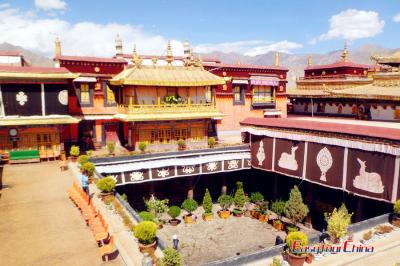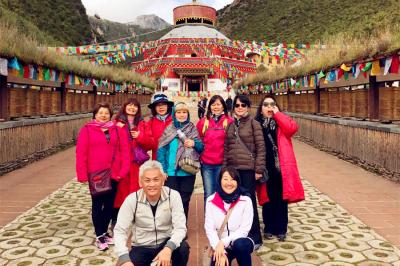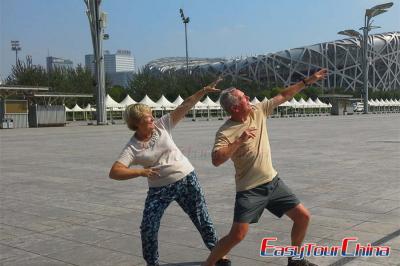Shennong Stream
Shennong Stream is the 60-kilometer tributary of the Yangtze River rising in the southern part of Shennongjia Natural Reserve and joining the Yangtze at Xirangkou in Hubei’s Badong County. It runs out of the deep valley through the forest at a height of 3000m above sea level, and rushes southward between rocky cliffs. Shennong Stream covers 60 km and totally 17 rivers and streams flow into it.
The crystal clear steam flows from north to south through deep gorges and finally it merges with the Yangtze at the east of the mouth of Wu Gorge, one of the Three Gorges. One relaxing ride of ferryboat passes along the Mianzhu, Yingwu and Longchang Gorges. Shennong Stream is also widely known as one of the famous shore excursion of Yangtze River cruise.
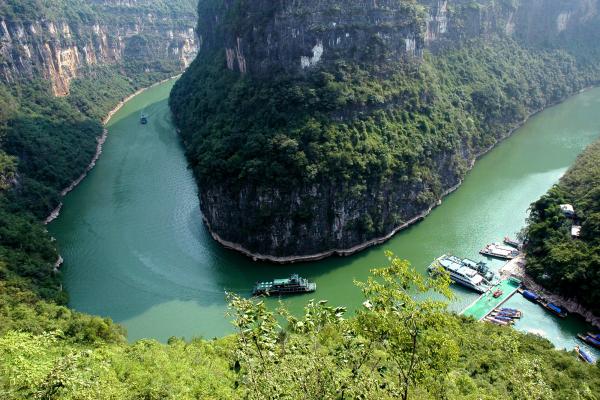
Shennong Stream Facts
Three Tributaries of Shennong Stream
Mianzhu Gorge
Precipitousness is the most noticeable characteristic of Mianzhu Gorge. Rocky cliffs rise steeply on both sides of the narrow river. Stalactites of all shapes sizes hang from the cliffs. The narrowest point of the gorge is only a bit over four meters wide. Here, the rocky walls stand so close across the river that they almost join together in the sky. This spot is called Yixiantian (A Rift in the Sky) where you can enjoy the life like Savage Palm and the Snake out of the cave.
Yingwu Gorge
Yingwu Gorge is famous for its natural beauty. Here, you can find flowers in full blossoms on all sides against the background of green hills; you can hear birds singing in the bushes and woods; you can walk through the dinging streams and take a drink in the clear springs; here, you can watch the "three color spring" shooting out of the cliff to forma 100" odd meter colored belt in the mid-air. The Swallow Cave is even more curious and marveling. This cave, home of thousands of short beaked golden swallows, is about 80 m in height and 30 m in breadth. About 50 m further into the cave, you can see tier upon tier of lava like terraced fields extending before your eyes. This spot is called the Thousand Fallow-Fields.
Longchang Gorge
Longchang Gorge is noted for its magnificence. Here, the river cuts through the sheering up rocky cliffs and winds its way down the deep gully. Peak Baota (Tower) thrusts abruptly into the sky, and traces of ancient battles can still be found.
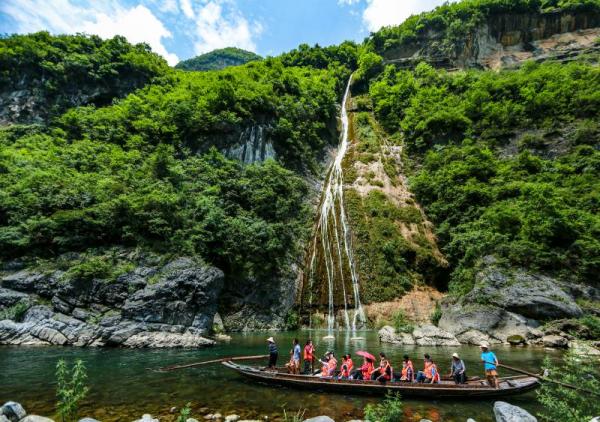
How to Visit Shennong Stream
After disembarking from your Yangtze River cruise ship, board an ancient “pea pod” flat-bottomed boat and drift downstream. Along the way, you will see steep cliffs rising at angles of 80 to 90 degrees, towering majestically and stretching continuously along the mountain peaks. The relative elevation difference between the peaks ranges from 300 to 1,200 meters, with the narrowest points between the cliffs measuring just 7 meters. Two small villages divide the 20-kilometer stretch into three sections: Mianzhu, Yingwu, and Longchangdong.
The cliff walls are not only covered with stalactites and oddly shaped rocks but also feature over 60 caves of various sizes. Most cave entrances have stone-and-earth walls, bearing traces of ancient warfare. Additionally, ancient hanging coffins can be found on the cliffs.
>> Recommended 4-day Chongqing to Yichang Yangtze River Cruise
Shennong Stream Cliff Grave - Hanging Coffins
Along the sheer cliffs of the Shennongxi Gorge, several hanging coffins are scattered—these were the burial sites of the ancient Ba (Sichuan) people. Before the Three Gorges Dam reservoir was filled, these Hanging Coffins were much higher above the water surface. These Hanging Coffins, weighing hundreds of kilograms, are typically hundreds of meters above the ground. Strangely, all the Hanging Coffins are placed on nearly inaccessible sheer cliffs. Not only is it unimaginable to carry the coffins up and place them there, but even climbing up empty-handed is unimaginable. So, how did the Hanging Coffins end up “flying” up there? Local villagers also cannot provide an answer.
According to research, most of the hanging coffins of Shennong Stream are relics from the Spring and Autumn Period and the Warring States Period (late Zhou Dynasty). At that time, due to frequent wars and widespread suffering, ancient people chose inaccessible cliffs as burial sites to symbolize seeking good fortune and fulfilling filial piety.
Hanging coffins have been categorized into seven types by experts: the first is the “wooden stake cliff-hanging style,” where one end of the coffin is placed in a natural cave or rock crevice, while the other end is suspended on wooden stakes on a sheer cliff. Second, the “natural cave-style,” where a natural cave is slightly modified or filled in, and the coffin is placed inside. Third, the “artificially carved horizontal-style,” where rectangular niches are carved into cliff walls along rivers, with sizes and widths suitable for one or two coffins. Fourth is the “artificial excavation method,” where a square hole 1 to 1.5 meters wide is excavated on the cliff face along the river, or a natural cave is modified into a square hole, with the coffin placed inside. Fifth is the “cliff wooden stake method,” where 2 to 3 small square holes are excavated horizontally on the cliff face along the river, wooden stakes are embedded, and the coffin is placed on top. Sixth, the “rock ledge method” involves placing the coffin within protruding or recessed rocks on the cliff face along the river, which are thick, flat, and stable, also known as “rock ledges” or “rock crevices.” Seven is the “rock edge style,” where a narrow, protruding rock edge is found on a steep cliff by the sea, forming a natural platform, and the coffin is placed on it.
How were these hanging coffins set on the cliff of Shennong Stream? There are three main theories: one suggests that the coffins were carried up via carved paths, which were then destroyed; the second proposes that the coffins were transported up during floods; the third theory involves using wooden winches, ropes, and pulleys to hoist the coffins into place.
However, who built these cliff graves, and who were the people buried there? These are secrets that have been lost to time.
>> Recommended 16-day China Impression Tour with Yangtze Cruise
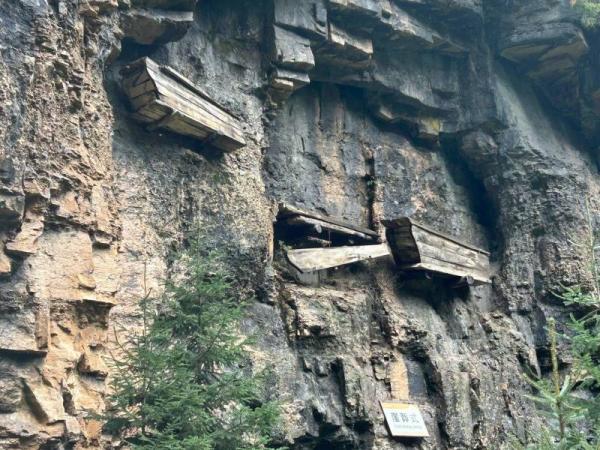
How to Get to Shennong Stream
By Bus
Take the passenger bus from Yesanguan Station in Enshi, Hubei Province, to Badong (reference fare: 30 yuan per person, approximately 2 hours). Upon arrival in Badong, take a taxi to the Shennongxi Scenic Area (approximately 15 yuan, approximately 15 minutes).
Take a passenger bus from Dajiuh Lake in Shennongjia to Badong. Upon arriving at the terminal station, get off at the Bachu Cultural Square. From the archway of the Badong Tourist Distribution Center, walk along the riverbank to the Shennongxi Scenic Area. Reference fare: 50 RMB per person, approximately 2 hours.
By China High-speed rail
Take the Zhengyu High-speed Railway from Beijing, Shijiazhuang, Zhengzhou, Wuhan, Xiangyang, Shennongjia, Wanzhou, Chongqing, Chengdu, etc., to Badong Station.
Take the Yiwang Railway from Chengdu, Chongqing, Enshi, Yichang, Wuhan, Hefei, Nanjing, Suzhou, Shanghai, etc., to Yesanguan Station.
>> Recommended 11-day China Xian Yangtze Cruise Shanghai Tour
